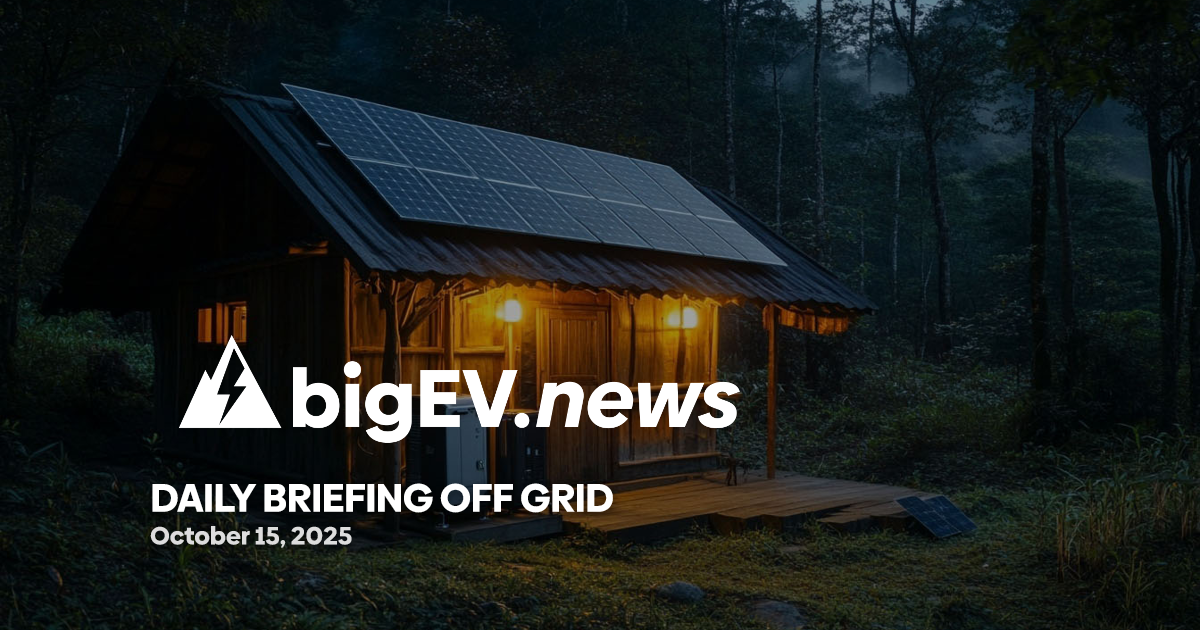Microgrid deployments, solar-battery RV advances, and breakthrough water filtration systems redefine resilient infrastructure for distributed energy and clean water access worldwide.
At a glance – The last 24 hours have seen a surge in off-grid and microgrid system deployments, with universities, retailers, and technology firms accelerating investment in distributed energy resources. St. Thomas University in Minnesota received three new 500-kW Caterpillar generators for its Center for Microgrid Research, marking a significant milestone in campus-based microgrid research and workforce development. The new generators will be integrated into the university’s expanding microgrid infrastructure, supporting advanced research into distributed energy, grid resiliency, and AI-driven control systems. This development follows a $5.4 million state grant and a recent $2 million partnership with Bright.Green, aimed at building next-generation microgrid facilities and supporting the growing demand for resilient, off-grid power solutions in response to increasing cloud-based data center and AI computing needs.
Technology advance – Solar-powered microgrids are rapidly evolving from isolated off-grid solutions to critical infrastructure for economic and resilient power delivery. SolMicroGrid, a New York-based firm, has pioneered an “array-to-microgrid” (ATM) model, transforming existing commercial and industrial solar installations into fully independent microgrids with integrated battery storage. This energy-as-a-service approach allows SolMicroGrid to assume ownership of solar-plus-storage projects, selling discounted power directly to customers in high-cost grid regions. CEO Kirk Edelman emphasized that the ATM model is most effective where grid power exceeds $0.20/kWh, enabling substantial savings and energy independence for hosts. The company leverages national O&M service providers for rapid site support, ensuring technical and financial asset management across its expanding portfolio.
Partnerships – Trinity Energy and Costco have advanced their partnership with the pre-commissioning of off-grid solar and battery storage systems at Costco’s Ontario and Mira Loma distribution centers in California. These modular electrified structures integrate solar PV, battery storage, inverters, and energy distribution systems to power 20 electric yard trucks, providing 11,750 hours of off-grid EV charging annually. The systems are expected to generate over 100 MWh of carbon-free energy each year, offsetting 3 million metric tons of CO2 and supporting Costco’s commitment to 100% clean energy by 2035. Earlier this year, Trinity and Costco launched a 2 MWh off-grid microgrid at a Norwalk, Connecticut warehouse, fully powering its standalone tire center and demonstrating scalable off-grid solutions for commercial fleets.
Acquisitions/expansions – In a move to expand microgrid capabilities, St. Thomas University’s Center for Microgrid Research is constructing a new facility on its St. Paul campus, led by Ryan Companies. The building will house the recently delivered Caterpillar generators and serve as a hub for distributed energy research, grid resiliency studies, and hands-on workforce training. The center’s expansion is backed by significant state and private investments, including a $1.5 million grant from Xcel Energy’s renewable development fund and a $2 million investment from Bright.Green. These funds are driving the integration of advanced digitalization and AI-ready microgrid technologies, positioning the university as a leader in microgrid innovation and education.
Regulatory/policy – Policy headwinds continue to shape the microgrid landscape, particularly in solar-friendly states with high grid power costs. SolMicroGrid’s CEO highlighted ongoing regulatory challenges in Washington that complicate solar development and microgrid deployment. Despite these hurdles, the company’s ATM model is gaining traction in regions where local policies support distributed energy and resilience. The upcoming Microgrid Knowledge Conference in Orlando is expected to address key regulatory drivers and barriers, with a call for session ideas and speakers focused on accelerating microgrid adoption and policy alignment for resilient infrastructure.
Finance/business – The microgrid market is experiencing robust growth, with forecasts from Grand View Research and Mordor Intelligence projecting annual deployment rates exceeding 17%, driving global market values between $50 billion and $100 billion. Major retailers like Costco are investing heavily in off-grid solar and battery storage to meet sustainability goals and reduce Scope 1 and 2 emissions by 39% by 2030. These investments are not only supporting energy independence but also creating new revenue streams for technology providers and service partners. The integration of solar, battery, and microgrid systems is enabling large-scale commercial and industrial customers to control energy costs, enhance resilience, and achieve climate action commitments in an increasingly uncertain energy environment.
Sources: microgridknowledge, pv-magazine-usa, energytech, microgridknowledge.com/campus-microgrids, pv-magazine-usa.com, energytech.com









